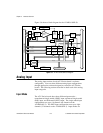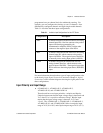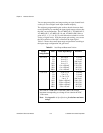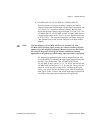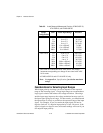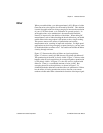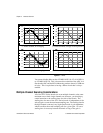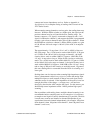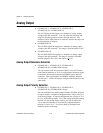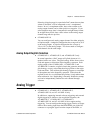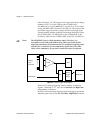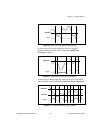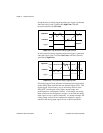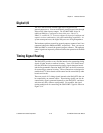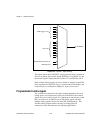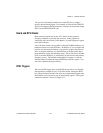
Chapter 3 Hardware Overview
AT-MIO/AI E Series User Manual 3-14
National Instruments Corporation
Analog Output
♦ AT-MIO-16E-1, AT-MIO-16E-2, AT-MIO-64E-3,
AT-MIO-16E-10, AT-MIO-16DE-10
The AT E Series boards supply two channels of analog output
voltage at the I/O connector. You can select the reference and
range for the analog output circuitry through software. The
reference can be either internal or external, whereas the range can
be either bipolar or unipolar.
♦ AT-MIO-16XE-50
The AT-MIO-16XE-50 supplies two channels of analog output
voltage at the I/O connector. The range is fixed at bipolar ±10 V.
♦ AT-MIO-16XE-10
The AT-MIO-16XE-10 supplies two channels of analog output
voltage at the I/O connector. The range is software selectable
between unipolar (0 to 10 V) and bipolar (+
10 V).
Analog Output Reference Selection
♦ AT-MIO-16E-1, AT-MIO-16E-2, AT-MIO-64E-3,
AT-MIO-16E-10, AT-MIO-16DE-10 only
You can connect each D/A converter (DAC) to the AT E Series
board internal reference of 10 V or to the external reference signal
connected to the external reference (EXTREF) pin on the I/O
connector. This signal applied to EXTREF should be between
-10 and +10 V. You do not need to configure both channels for the
same mode.
Analog Output Polarity Selection
♦ AT-MIO-16E-1, AT-MIO-16E-2, AT-MIO-64E-3,
AT-MIO-16E-10, AT-MIO-16DE-10 only
You can configure each analog output channel for either unipolar
or bipolar output. A unipolar configuration has a range of 0 to V
ref
at the analog output. A bipolar configuration has a range of -V
ref
to +V
ref
at the analog output. V
ref
is the voltage reference used by
the DACs in the analog output circuitry and can be either the
+10 V onboard reference or an externally supplied reference
between -10 and +10 V. You do not need to configure both
channels for the same range.



